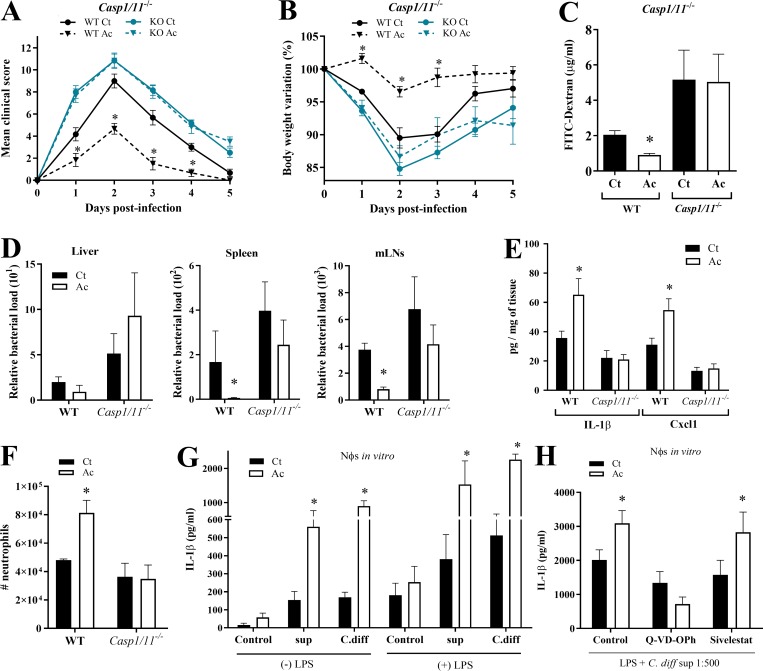Figure 3.
Acetate augments caspase-1 activation and IL-1β secretion in response to C. difficile toxins. (A–C) Clinical score (A), body weight changes (B), and intestinal permeability (C) in Casp1/11−/− and WT mice that were treated (Ac) or not (Ct) with acetate and infected with C. difficile (n = 5–6). Casp1/11−/− and WT were bred in the same animal facility, matched for sex and age, and infected at the same time to avoid batch effects. (D) Bacterial translocation into the peripheral organs in Casp1/11−/− and WT mice on day 1 p.i. (n = 6). (E) Quantification of IL-1β and CXCL1 in colon samples of Casp1/11−/− and WT mice on day 1 p.i. Results were normalized according to sample weight (n = 6). (F) Absolute numbers of CD11b+Ly6G+ neutrophils in the colonic lamina propria of Casp1/11−/− mice and WT mice on day 1 p.i. (n = 6). (G) Quantification of IL-1β production by neutrophils in vitro. Neutrophils were incubated with or without LPS ± acetate, followed by stimulation in vitro with supernatant containing whole C. difficile (C.diff), toxin-containing supernatant (sup), or medium as indicated (n = 8). (H) IL-1β production by neutrophils after incubation in vitro with LPS, C. difficile supernatant, and either caspase-1 inhibitor (Q-VD-OPh), elastase inhibitor (Sivelestat; n = 6), or DMSO (control). Results are representative of two independent experiments with three to six mice in each experimental group (A, B, E, and F), one experiment with six mice in each group (C and D), or pooled results from two independent experiments with three to four mice in each group (G and H). Results are presented as mean ± SEM. *, P < 0.05.

